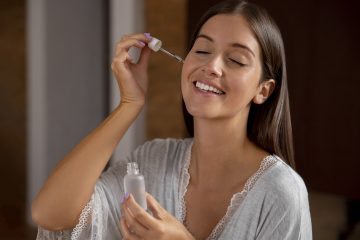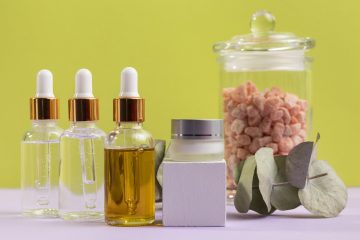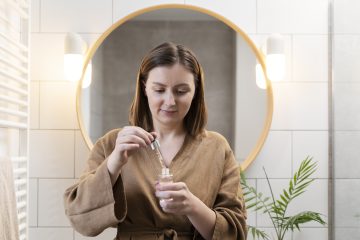What is Retinol and How Does It Work?
Retinol is a derivative of vitamin A, highly regarded in skincare for its transformative abilities. It penetrates the skin’s surface to accelerate cell turnover, shedding old skin cells and revealing fresher skin underneath. By stimulating collagen production, retinol reduces fine lines and improves skin texture, making it a powerful anti-aging ingredient.
Once absorbed, retinol converts into retinoic acid, the active form that works on your skin. Consistent use can lead to significant improvements in skin tone, skin whitening, and clarity. However, it may cause initial irritation for some, so understanding how it works can help you tailor your routine for the best results.
Key Benefits of Using Retinol in Skincare
Retinol effectively reduces fine lines and wrinkles by stimulating collagen production and accelerating skin cell renewal, resulting in smoother, firmer, and more youthful-looking skin. It also helps even out skin tone by fading dark spots and reducing hyperpigmentation caused by sun damage or acne.

In addition to its anti-aging and brightening properties, retinol is beneficial for acne-prone skin. It prevents clogged pores, reduces the size and appearance of blemishes, and helps keep skin clear by regulating the skin’s natural cell turnover process, which also minimizes the chances of future breakouts and acne scars.
Understanding Different Forms of Retinol
Retinol is a derivative of Vitamin A widely used in skincare for its anti-aging, acne-fighting, and skin-renewing benefits. It comes in different forms, each varying in strength, effectiveness, and potential irritation level. Let’s break down the main types:
1. Retinyl Palmitate
-
What is it?
Retinyl palmitate is the mildest form of retinol. It is an ester of retinol combined with palmitic acid (a fatty acid). -
How does it work?
It undergoes a two-step conversion process in the skin:
Retinyl Palmitate → Retinol → Retinaldehyde → Retinoic Acid (active form).
Because it requires multiple conversions, its potency decreases at each step. -
Who should use it?
Ideal for:-
Beginners starting retinol.
-
People with sensitive skin or conditions like mild rosacea.
-
Those wanting gentle, long-term anti-aging benefits with minimal risk of irritation.
-
-
Benefits:
-
Least irritating form.
-
Provides antioxidant protection.
-
Improves skin texture over time.
-
-
Limitations:
-
Less potent than pure retinol or retinoic acid.
-
Results are gradual and take longer to become visible.
-
2. Retinol (Pure Retinol)
-
What is it?
Pure retinol is the most common over-the-counter form of Vitamin A used in skincare products. -
How does it work?
It undergoes a one-step conversion in the skin:
Retinol → Retinaldehyde → Retinoic Acid.
This makes it significantly more effective than retinyl palmitate but less irritating than prescription retinoic acid. -
Who should use it?
Suitable for:-
Individuals with normal, combination, or oily skin.
-
Those who want visible anti-aging, pigmentation, or acne results without prescription-strength irritation.
-
-
Benefits:
-
Stimulates collagen production.
-
Accelerates cell turnover for smoother, brighter skin.
-
Helps fade hyperpigmentation and fine lines.
-
-
Limitations:
-
Can cause dryness, peeling, or irritation initially (retinization phase).
-
Requires consistent sunscreen use due to increased photosensitivity.
-
3. Retinoic Acid (Tretinoin)
-
What is it?
Retinoic acid is the active and most potent form of Vitamin A. It is commonly known as tretinoin and is available only through prescription. -
How does it work?
Unlike retinyl palmitate or retinol, retinoic acid does not require any conversion. It is in its active form, meaning it can bind directly to skin cell receptors and start working immediately. -
Who should use it?
Best for:-
People with severe acne, deep wrinkles, or significant sun damage.
-
Those under dermatologist supervision due to its potential for significant irritation.
-
-
Benefits:
-
Fastest and most effective for collagen stimulation, acne treatment, and skin renewal.
-
Clinically proven to treat fine lines, wrinkles, and hyperpigmentation.
-
-
Limitations:
-
High risk of redness, peeling, dryness, and irritation, especially in the initial weeks.
-
Requires strict sun protection and moisturizing.
-
Should be used under medical guidance to avoid skin barrier damage.
-
Summary Comparison Table
| Form | Conversion Steps | Potency | Irritation Potential | Best For |
|---|---|---|---|---|
| Retinyl Palmitate | Two | Mild | Very Low | Beginners, sensitive skin |
| Retinol | One | Moderate | Medium | Intermediate users, anti-aging |
| Retinoic Acid (Tretinoin) | None | High | High | Advanced users, prescribed acne/aging treatments |
How to Incorporate Retinol and Maximize Its Effectiveness

Introduce retinol gradually, starting with a low concentration once or twice a week, and increase frequency as your skin builds tolerance. Apply retinol at night since it can increase sun sensitivity, and always use a broad-spectrum sunscreen during the day to protect your skin.
To minimize irritation, use a gentle cleanser and hydrating moisturizer to support your skin’s barrier. Be patient, as visible improvements may take several weeks to months.
Boost retinol’s effectiveness by pairing it with complementary ingredients like antioxidants (such as vitamin C) during the day, which help protect against environmental damage while retinol renews your skin overnight. Also, store retinol products in a cool, dark place and keep containers tightly closed to preserve potency.
Common Side Effects of Retinol and How to Manage Them
While retinol is highly effective, it can also cause side effects, especially when first introduced into your skincare routine. Common reactions include dryness, redness, and peeling.
To manage these side effects, ensure your skin is well-hydrated. Use a gentle, fragrance-free moisturizer to soothe and repair the skin barrier. Avoid using other potent active ingredients like AHAs or BHAs simultaneously with retinol, as this can exacerbate irritation.
If you experience severe irritation, reduce the frequency of retinol application or switch to a lower concentration. If irritation persists, consult with a dermatologist to tailor your regimen or consider alternative formulations.
Retinol Myths and Misconceptions Debunked
One common myth is that retinol thins the skin. In reality, retinol thickens the dermis by stimulating collagen production, leading to firmer, more resilient skin. It’s the superficial layer that may temporarily become thinner due to increased cell turnover.
Another misconception is that retinol cannot be used on sensitive skin. While it’s true that retinol can initially irritate, many formulations are designed for sensitive skin, allowing gradual acclimation. Starting with a lower concentration and incorporating soothing ingredients can help sensitive skin types benefit from retinol without significant irritation.
While retinol can increase sun sensitivity, it can be used year-round with diligent sun protection. Applying a broad-spectrum sunscreen every morning ensures your skin remains protected, allowing you to continue reaping the benefits of retinol throughout the year.

Conclusion
Incorporating retinol into your skincare routine can offer transformative results, from reducing wrinkles to improving skin texture and tone. Understanding how retinol works and how to use it effectively ensures you can enjoy its full range of benefits while minimizing potential drawbacks.
As you embark on your retinol journey, remember that consistency and patience are key. Tailoring your routine to suit your skin’s unique needs will help you achieve the desired outcomes.
